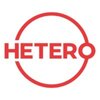Filter interviews by
ADL Supplier Trainee Interview Questions and Answers
ADL Supplier Trainee Interview Experiences
1 interview found
I appeared for an interview before Jul 2016.
Interview Questionnaire
2 Questions
- Q1. Regarding the projects
- Q2. Iq test
Interview Preparation Tips
Duration: 1 hour 30 minutes
College Name: Mumbai education trust
Top trending discussions






Interview questions from similar companies

I applied via Referral and was interviewed before Jul 2020. There was 1 interview round.
Interview Questionnaire
1 Question
- Q1. About work and process
Interview Preparation Tips

I applied via Naukri.com and was interviewed before Dec 2019. There was 1 interview round.
Interview Questionnaire
2 Questions
- Q1. Oracle Apps Technical - PlSQL concepts
- Q2. Basic questions like logic to find even number, swap number ,etc.
Interview Preparation Tips

Trainee Interview Questions & Answers
Sun Pharmaceutical Industriesposted on 13 Sep 2017
I appeared for an interview before Sep 2016.
Interview Preparation Tips
Experience: The conclusion :
If you see from one side you will find that there is actually no need for drug price control in India. There are already so many competitive forces that allow the market to sell both premium as well as generic drugs. So even if the doctor prescribes the expensive branded drug, the patient has option to ask for substitute generic drug at pharmacy. But then on the other side, India has got a huge percentage of population that finds it tough to meet the medical costs. And, therefore it becomes responsibility of the government to opt for the drug price control. However, it should be done in a planned way with a proper discussion with the industry so that no one feels the heat.
Tips: Group discussions should include recent events and more talks should be conducted regarding the actual job
Duration: 1 hour
Round: Group Activity
Experience: There debate topic was should community pharmacists should shif their focus away from dispensing and towards NHS service provision or not.If there is to be widespread reform by 2020, community pharmacy requires a revolution rather than evolution. Any revolution in community pharmacy is likely to be precipitated by a massive divestment in prescription dispensing in order to release money to help fund growth of NHS integrated care organisations. With substantial competition from big players and local practices keen to compete for the same work, the incomes of many community pharmacists will shrink rapidly
With the use of new technologies, dispensing in the community could soon replicate the dispensing systems used in hospitals. Indeed, policymakers are pushing for the replication of hospital dispensing arrangements in the community and have been quietly preparing for factory-type dispensing pharmacy outlets. So the conclusiom was pharmacist should shift their focus to NHS service.

I applied via Approached by Company and was interviewed in Apr 2018. There were 2 interview rounds.
Interview Preparation Tips
So if you are from testing background prepare for software testing questions and the application that you have worked on.
Skills: Technical, Communication, Body Language, Leadership
Duration: 1-4 weeks

Interview Questionnaire
1 Question
- Q1. They will ask about basic Google and YouTube process
Interview Preparation Tips
Experience: We have to be good in communication skill .as well as they expect us to be more confidential behaviour
Round: Telephonic client round
Experience: They will ask you behavioural questions simply like spell it name , and process based some questions

I appeared for an interview before Nov 2016.
Interview Questionnaire
2 Questions
- Q1. Simple question name and all
- Q2. Why u want to join wipro
- Ans.
I want to join Wipro because of its reputation for innovation and career growth opportunities.
Wipro is known for its cutting-edge technology solutions
I am impressed by Wipro's commitment to employee development
I believe Wipro will provide me with a challenging and rewarding work environment
Interview Preparation Tips
Experience: I got selected. And called to the office. For documentation. And then after a day I received one more call from higher authority for another interview. But it was a telephonic one. Next day I received call to come and collect offer letter
Tips: Be confident. Try to be normal. Do not show off much. English communication should be good.

Interview Questionnaire
6 Questions
- Q1. I was asked why Consulting,
- Q2. About the Company,
- Q3. What is the Current Exchange rate
- Ans.
The current exchange rate varies depending on the currency pair and market conditions.
Exchange rates are constantly fluctuating based on supply and demand
Factors such as political events, economic data, and central bank decisions can impact exchange rates
For example, as of August 2021, the exchange rate for USD to EUR is approximately 0.85
- Q4. Taking cue from an earlier answer I was asked basics of Corporate Hedging
- Q5. What is your view on the indian rupee vs dollar in the long run
- Q6. A problem was given and I had to give the solution- the problem was “A company has corporate cellphone connection for its employees. How would you ensure that you achieve the same at the least cost?”
- Ans.
Negotiate with service providers for bulk discounts and limit data usage to essential business needs.
Negotiate with service providers for bulk discounts
Limit data usage to essential business needs
Consider implementing a BYOD (Bring Your Own Device) policy
Use mobile device management software to monitor and control usage
Encourage employees to use Wi-Fi instead of cellular data when possible
Interview Preparation Tips
Experience: I was able to explain Why Consulting and also showed a keen interest in Government Consulting which Wipro was heavily into.
General Tips: A non-fish-market GD goes a long way in helping your chances
Skills: case analysis, group discussion
College Name: NA

I appeared for an interview in May 2017.
Interview Preparation Tips
Experience: Everyone was giving their opinions about the locality they belong from & based on their conversation skill the hr was selecting candidates.
Tips: Be loud & clear & confident
Duration: 20 minutes
Round: Telephonic round
Experience: We were connected to a voice based module & we had to tell them the thing they asked & then we were given a sheet we had to repeat what they asked from the sheet.
Tips: Make your voice intonation a bit high & be clear
Round: Test
Duration: 30 minutes
Total Questions: 40

Interview Questionnaire
12 Questions
- Q1. What is the major attributes that a consultant should possess?
- Q2. What are your positives as a consultant?
- Q3. Why consulting?
- Q4. Why not finance, marketing and HR (individually)?
- Ans.
Consultant role requires a broader skill set and the ability to provide holistic solutions.
Consultants need to have a deep understanding of various business functions and how they interact.
They are expected to provide comprehensive solutions that address multiple aspects of a problem.
Finance, marketing, and HR are important components of a business, but a consultant needs to go beyond individual functions.
For example, ...
- Q5. What is your major drawback that you faced working as a consultant in your previous organization?
- Ans.
My major drawback as a consultant in my previous organization was my lack of experience in a specific industry.
Lack of industry-specific knowledge
Difficulty in understanding the unique challenges faced by clients
Limited network and connections in the industry
Less credibility due to lack of experience
Need for extensive research and learning before providing effective solutions
- Q6. What do you know about the company?
- Q7. Why do you want to join this company?
- Q8. What are the key factors that need to be in place while creating a client solution?
- Q9. A small business scenario, and asked me the approach to problem solving (the problem was similar to the ones I used to handle during my work ex)
- Q10. General work ex, my domain, knowledge, background, experience of interacting with clients
- Q11. The service I was working on and my learnings on the same
- Q12. Also the interviewer asked me-What is one thing that u can ask me which will convince u that wipro is the company for you
Interview Preparation Tips
Experience: They also asked me questions related to my Work Experience-
Round: Group Discussion
Experience: Group Discussion: Topic was “Impact of small business on Indian Economy”.We generally discussed the small industries and entrepreneurial attitude but the panel also expected us to discuss the mom and pop stores as well
General Tips: My prior work experience was a major boost. A comprehensive knowledge of what I was doing before helped me present myself in a strong position.2. Display interest in the company. Knowing in detail about wipro’s consulting line of work helped me a lot.3. Positive body language, confidence adds.4. Display love for the profile/field you were applying to.5. Justify all that you have done in life till now. The business case study which he asked me was similar to what I used to face during my work ex. A practical & logical approach with explanations established my consulting experience.
Skills: Economics, case Analysis
College Name: NA
Skills evaluated in this interview
Tell us how to improve this page.
Interview Questions for Popular Designations
Trainee Interview Questions from Similar Companies
|
Software Developer
3
salaries
| ₹5.2 L/yr - ₹8 L/yr |

Wipro

Hindustan Unilever

Sun Pharmaceutical Industries

Aurobindo Pharma
- Home >
- Interviews >
- ADL Supplier Interview Questions











